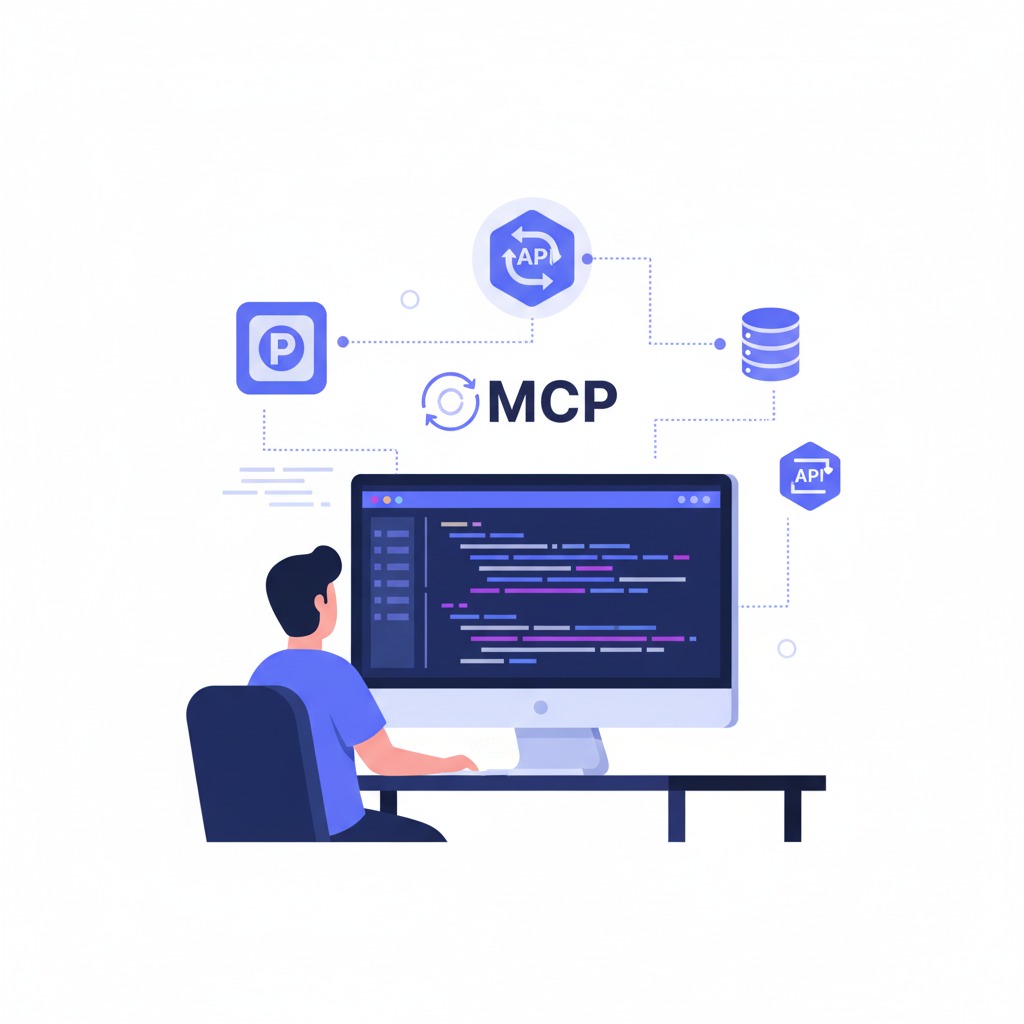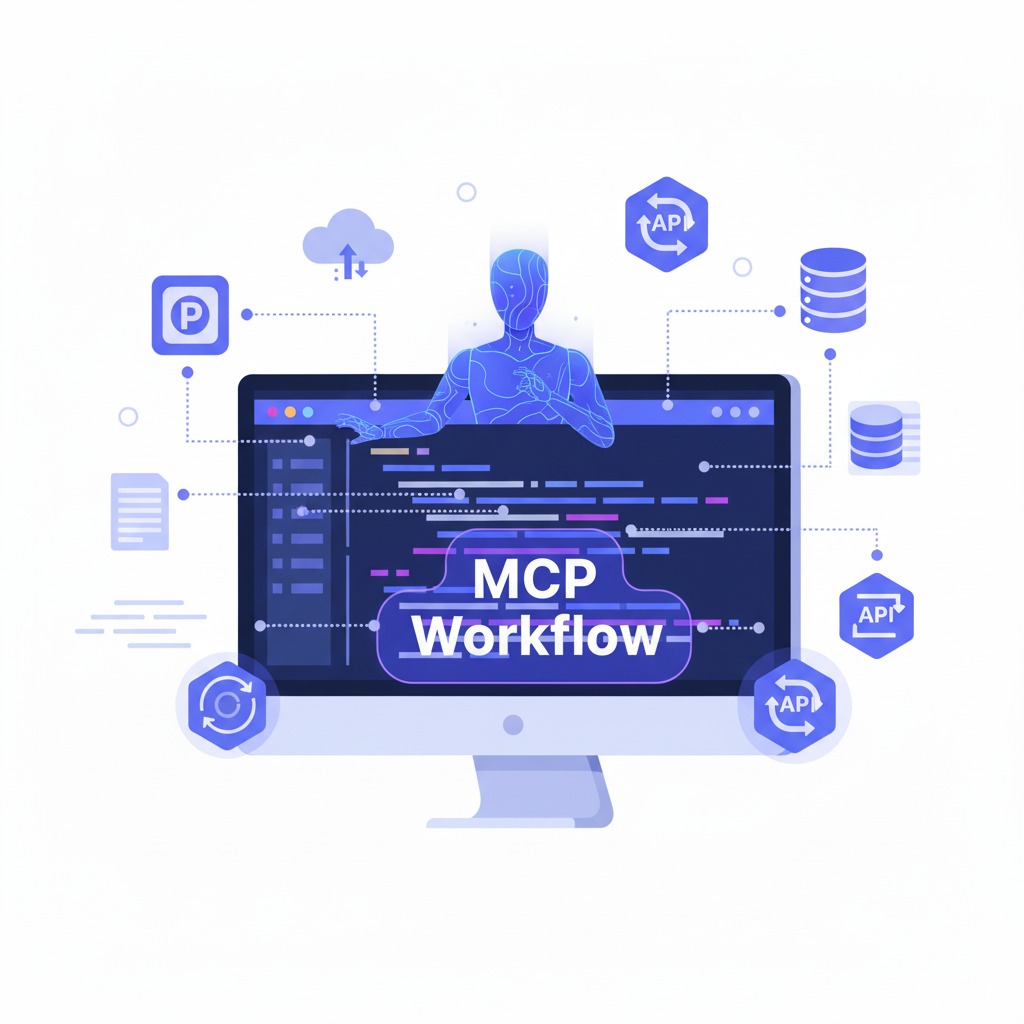What Is MCP? A Plain‑English Guide for Builders

What Is MCP? A Plain‑English Guide for Builders
If you've ever wired a model to GitHub, Slack, and a database—then rewrote the same glue code for the next app—you've met the problem MCP tries to solve.
MCP (Model Context Protocol) is a simple idea: a common way for model‑powered apps to talk to outside tools and data. Instead of every client inventing its own plugin format, MCP defines one language for what tools exist, what they do, and how to call them.
Think of it as USB‑C for model tools: one port, many devices.
TL;DR
- Client: your app (IDE assistant, desktop chat, agent, etc.).
- Server: a process that exposes capabilities.
- Capabilities:
- Resources — things you can read (files, docs, DB queries).
- Tools — actions you can run (search, write, transform, deploy).
- Prompts — reusable, parameterized prompt templates.
- Transport: how they talk (usually
stdioorSSE).
The protocol defines the shape of those things and how to call them, so clients and servers can mix and match.
Why this matters
Today's integrations are a patchwork: per‑client plugins, bespoke SDKs, inconsistent permissions. MCP gives you:
- Less glue code — one server can serve multiple clients.
- Safer calls — explicit permissions and auditable steps.
- Easier upgrades — update a server once, every compatible client benefits.
- Cleaner architecture — put tool logic next to the systems it controls.
- Interoperability — a healthier ecosystem where parts fit together.
How it works (without the fluff)
- A client connects to a server and asks, “What do you offer?”
- The server replies with resources, tools, and prompts.
- The client (or the model inside it) decides when to use them.
- Every call is explicit: inputs, outputs, errors, and logs are structured.
Here's a tiny, shape‑only example of what a server might expose:
{
"resources": [
{
"uri": "db://reports/sales:latest",
"mime": "application/json",
"description": "Latest sales snapshot"
}
],
"tools": [
{
"name": "create_ticket",
"description": "Open an issue in the tracker",
"input_schema": {
"type": "object",
"properties": {
"title": { "type": "string" },
"body": { "type": "string" }
},
"required": ["title"]
}
}
],
"prompts": [
{
"name": "commit_message",
"description": "Conventional commit message helper",
"schema": {
"type": "object",
"properties": { "change": { "type": "string" } },
"required": ["change"]
}
}
]
}
The real spec covers discovery, streaming, errors, and more—this just shows the idea.
A concrete mental model
- Resources are read‑mostly: “show me the spec,” “query this table,” “fetch that page.”
- Tools change the world: “open a PR,” “resize these images,” “kick off a deploy.”
- Prompts are building blocks: consistent templates you can parametrize and reuse.
You can compose them: read a resource, pass it to a tool, then use a prompt to craft a summary.
Where MCP fits today
- IDE/Composer agents — let a model explore your repo, run project scripts, or talk to CI without client‑specific plugins.
- Internal bots — one server exposes company‑approved actions (search docs, file tickets, orchestrate jobs) to every MCP‑capable client.
- Ops dashboards — read logs and metrics as resources; expose safe tools for rollbacks or restarts.
When you shouldn't use MCP
- You only need a single, hard‑coded API call inside one app.
- You can't accept a model making tool calls (even with approvals).
- You need offline batch work with no client interaction.
MCP shines when multiple clients might reuse the same capabilities, or when you want a clean boundary between “model interface” and “system actions.”
Practical tips
- Name things well. Clear tool names and descriptions help models pick the right one.
- Be explicit about safety. Require approvals for destructive tools; validate inputs; log everything.
- Keep tools small. Do one thing, return structured results. Chain tools if needed.
- Handle timeouts/retries. Make failures boring and predictable.
- Document resources. If a resource is expensive or stale, say so in the description.
60‑second quick start (Cursor example)
- Open Settings → Features → MCP → + Add New MCP Server.
- Pick a transport:
- stdio — command that starts your server
- SSE — the server's SSE endpoint URL
- Save, then refresh the tool list. Mention a tool by name in Composer to nudge usage if needed.
(Other clients have different UIs, but the idea is the same.)
What MCP is not
- Not a model. It doesn't generate text or images.
- Not a plugin store. It's a protocol; directories are separate.
- Not magic security. It helps with permissions and auditing, but you still need sane scopes and reviews.
The takeaway
MCP gives us a shared way to connect models to the real world. It isn't trying to be clever; it's trying to be consistent. If you're tired of bespoke integrations and want tools you can reuse across clients, MCP is the simplest path to build once, use everywhere.
Comments
Table of Contents
About the Author
Expert developer passionate about modern web technologies and AI-assisted development.
Popular Tags
Stay Updated
Get the latest articles and tutorials delivered to your inbox.
